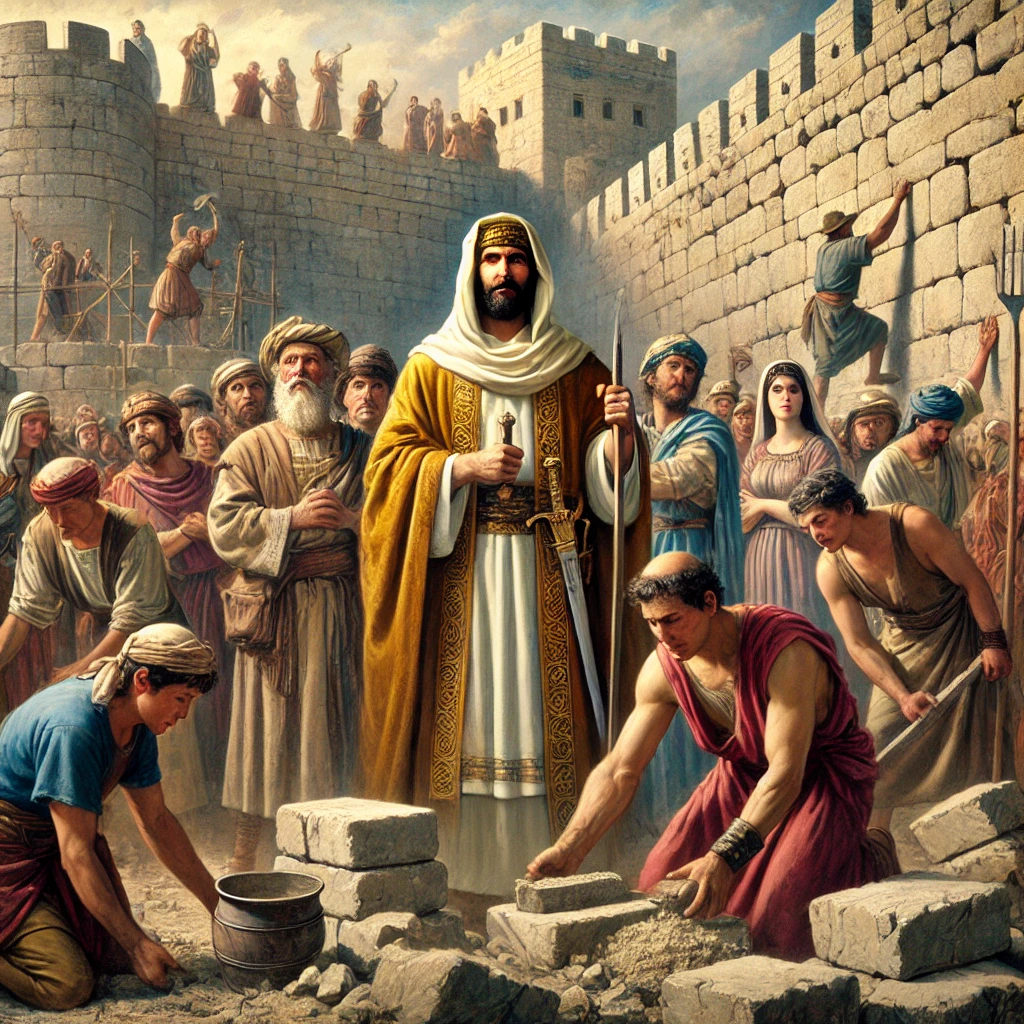Mobilising – from a Mob to a Movement

Reading Nehemiah 3 recently I was struck by his genius as a leader led by God, mobilizing people who were down, depressed and defeated into an effective, unified movement that worked as a team to accomplish the vision.
As leadership expert Ken Blanchard put it, “None of us is as smart as all of us” but rather than just set people loose to get on with what they felt like, Nehemiah built a cohesive and collaborative team, where every person knew their role, worked alongside others, and took ownership of their task. The result? The walls of Jerusalem were rebuilt in record time, despite opposition and challenges.
Clarify the Win
In any team, whether in business, ministry orsports, each person must understand what success looks like. A football team knows that winning means scoring goals and stopping the opponent from scoring. But beyond the general goal, each player must know their specific role—whether they are a striker, defender, or goalkeeper.
Nehemiah didn’t just point and tell people, “Let’s rebuild the wall.” He defined each person’s role, assigned tasks, and made sure they understood how their part contributed to the greater mission. As leaders, we must do the same and recently this has been underlined to me as crucial because I tend to lean into what I’d call high trust low control, but others might describe as ‘we don’t know what we’re doing!’ I’m learning that we must:
- Clarify the goal – What are we trying to accomplish?
- Define roles – What does each person contribute?
- Celebrate wins – Are we recognizing achievements and progress?
Practical Takeaways for Church Leaders
- Assign Roles Based on Passion and Skill
Nehemiah placed people where they had a personal stake. The priests worked on the Sheep Gate, merchants built near their businesses, and others repaired the section closest to their homes and families. When people feel involved, they are invested, and they give their best. - Encourage Teamwork and Support
Nehemiah recorded the names and details of who worked alongside whom. This wasn’t just about logistics; it was about morale. People build better when they know they are not alone. Who are you ‘next to’? Are we intentional about placing people alongside others to foster cooperation and encouragement? - Recognize and Reward Hard Work
Nehemiah noticed those who worked diligently – and those who didn’t. He praised Baruch for working earnestly (Nehemiah 3:20), while calling out the nobles of Tekoa for refusing to serve (Nehemiah 3:5). Effective leaders recognise both commitment and complacency. - Model Servant Leadership
The high priest and Levites worked alongside ordinary laborers. Nehemiah himself was not above getting his hands dirty. Leaders must be willing to serve before they can effectively lead. - Adaptability is Key
Goldsmiths, perfumers, and merchants all took on new roles to meet the need – as builders! Sometimes, serving means leaving your comfort zone to stepping up and in where the team needs you most.
Key Questions for Reflection
- Have you clearly defined what a “win” looks like for your ministry or team?
- Do your team members know how their role contributes to the bigger picture?
- Are you placing people in roles that align with their passions and strengths?
- How are you recognizing and celebrating the efforts of those who serve?
- Are you fostering a culture of teamwork, where people encourage one another?
The Ultimate Enemy: Disunity
One of Nehemiah’s greatest leadership lessons was ensuring that the real enemy was identified. The people of Jerusalem faced external opposition at this stage, but later as it may be for us the biggest threat to any team is internal conflict, pride and disunity. Nehemiah made sure that the builders prayerfully focused on the task, not on squabbles or personal agendas.
As church leaders, we must guard against distractions, detractors and disunity. The person working next to you is never the enemy. Our calling is to build God’s Kingdom together, strengthening the foundations, clearing away rubble, and constructing something stronger than before.
Final Thought
Imagine what could be accomplished for the Kingdom if every person in your church found their place on the wall, rolled up their sleeves, and worked with excellence! When everyone embraces their role, serves with humility, and stays focused on the mission, the Church becomes an unstoppable force in the world.
So, where is your place on the wall? And who are you building alongside?
